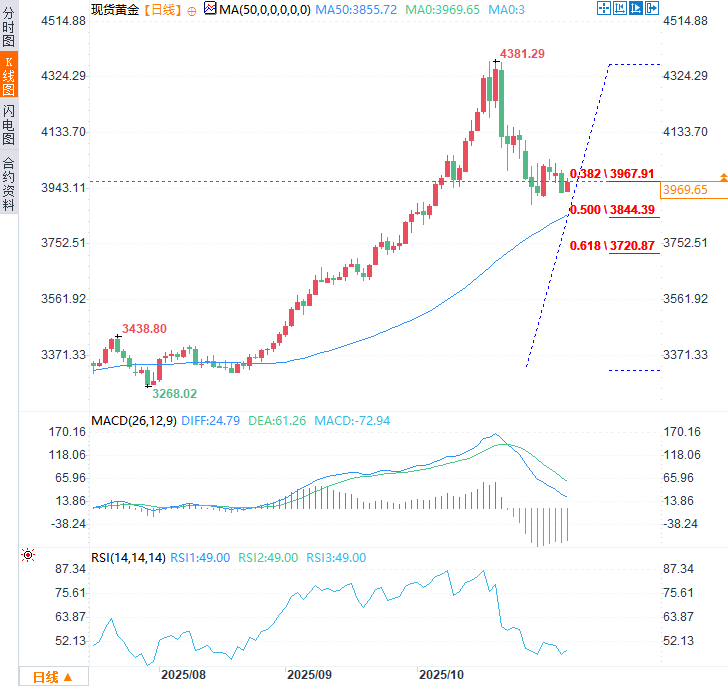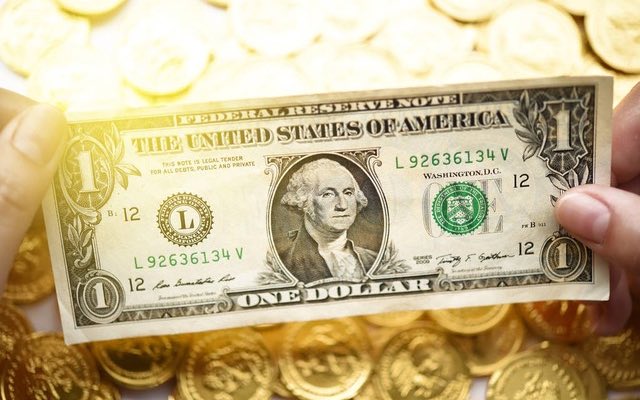Gold prices may have peaked in 2025, and the next upward trend may begin in early 2026.
2025-11-05 15:52:53

Over the past two weeks, market sentiment has shifted from euphoria to rationality, and the market is reassessing how much of the core narratives such as expectations of interest rate cuts in 2025, fiscal pressures, geopolitical risk hedging, and central bank gold purchases have already been priced in.
The Indian festival season typically boosts demand for gold jewelry. The market has now entered the traditional post-festival off-season, but with the return of the year-end gold buying spree and the recent price correction, the market is expected to gradually stabilize.
The strong dollar exerted pressure.
Powell's recent comments that a December rate cut is not a given have boosted the dollar and pushed up real yields, further dampening enthusiasm in the gold market, while the market's reaction to progress on tariffs has been relatively muted.
Investors recognize that deep-seated strategic contradictions remain unresolved, particularly in the areas of technology, supply chains, and industrial policy. This decision may have reduced tail risk, but it has not changed the long-term logic of holding safe-haven assets.
The US dollar index had risen for five consecutive trading days, breaking through the 100 mark, and fluctuated around 100.19 on Wednesday.
Technical Analysis
In terms of technical trends, the recent pullback in gold prices is likely a healthy development, indicating that the market is releasing pressure rather than reversing the trend .
Support levels have gradually formed in the $3,835-$3,878 range, which coincides with the 50% Fibonacci retracement level of the rally since August ($3,844.39) and the 50-day moving average ($3,855.64).
If risk appetite in the stock market continues to rise and the US dollar continues to strengthen, the possibility of a further decline in gold prices in the short term cannot be ruled out.

(Spot gold daily chart, source: FX678)
Gold ETF holdings increased significantly during periods of rising gold prices.
Gold ETF holdings increased significantly during the rally, while futures data only showed a moderate decrease in long positions, without any large-scale liquidation .
Meanwhile, central bank gold purchases remain a key pillar of market stability. According to a World Gold Council report, official sector purchases reached 220 tons in the third quarter, pushing year-to-date total purchases to 634 tons—close to last year's record level. This sustained official demand will continue to curb downward volatility in gold prices.
Despite recent weakness in gold, concerns about fiscal debt, currency devaluation risks, central bank demand, and the Federal Reserve's policy path suggest that the bullish foundation for gold remains solid.
Short-term outlook for gold
Regarding the short-term outlook for gold, although the high point for this year may have been reached, the recent pullback is more like a consolidation than a collapse .
After gold prices hit a record high near $3,500 per ounce in May, they underwent a consolidation phase that lasted for about four months before a breakout in August spurred a nine-week rally with a 27% gain.
If this consolidation period is similar, it could mean the market will enter another period of sideways trading until an upward trend resumes in early 2026. Until then, high volatility and fluctuating market sentiment will likely continue to test the short-term convictions of both bulls and bears.
After this round of adjustment ends, the factors that previously drove this year's gains—debt issues, inflationary pressures, and the need for asset diversification—are likely to regain dominance in the market, and the next substantial rally is expected to begin in 2026 .
At 15:40 Beijing time, spot gold was trading at $3969.53 per ounce.
- Risk Warning and Disclaimer
- The market involves risk, and trading may not be suitable for all investors. This article is for reference only and does not constitute personal investment advice, nor does it take into account certain users’ specific investment objectives, financial situation, or other needs. Any investment decisions made based on this information are at your own risk.





















